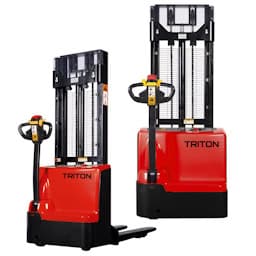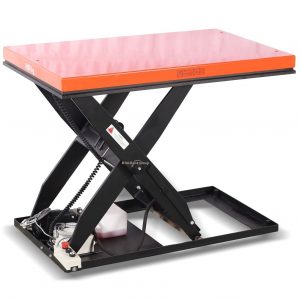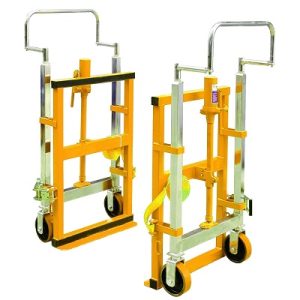Transporting goods or machinery from one area to another is a vital part of the manual handling industry, and forms the basis of many warehouses, factories and distribution centres. There are pallet trucks and manual stackers which can help with the transportation and storage of such goods, but when exceedingly heavy items or the machinery itself needs to be moved, ordinary trucks are often incompatible and unsuitable for the job. Machinery moving skates help to make this task much simpler and faster by spreading the load evenly across four different points and allowing ease of movement.
Machinery moving skates function as a result of heavy-duty sealed bearings, which help to spread heavy load easily and make them easier to manoeuvre. Loads can be lifted using either roller crowbars or jacks in order to position the skates, and then they can be moved around a workplace with ease. All sets of moving skates are provided in fours, with either two or four turntable skates within. The turntable skates are used for steering purposes, and can be locked with a lock pin if the load is simply being moved in a straight line, to prevent veering off course and causing injury or damage. The skates generally have a capacity of at least a few tonnes. PU wheels aid grip and allow smooth transportation, and the steel centres provide a robust and durable base for such movement.
The useful skates come with not only a promise of making transportation easier, but also with a myriad of guidelines which must be followed to ensure safe and effective practice. The surface on which they are used is very important; skates must only be utilised on a smooth and hard surface which is fully capable of withstanding the full weight of any load. A surface such as grass or a potholed forecourt can cause the load to become unbalanced, compromising the safety of those operating the skates and those in the immediate vicinity. If possible, the entire route that the skates will take whilst carrying the load should be cleaned of any oil, grease or debris which may potentially hinder its progress. Operators must also assess the load and consider the best position for the skates; if the load is of an awkward or cumbersome shape, it can be difficult to get the cargo to rest in the way it should. Weight should ideally be equally spread across the top pads of the skates.
Machinery moving skates are an innovation which can cut out a lot of time and effort for employees, allowing them to manoeuvre heavy goods and machinery through workplaces with no difficulty. If the guidelines are followed and precautions are taken to ensure the safety of all involved, these skates can drastically increase productivity and allow employees to streamline the working process of their day.





